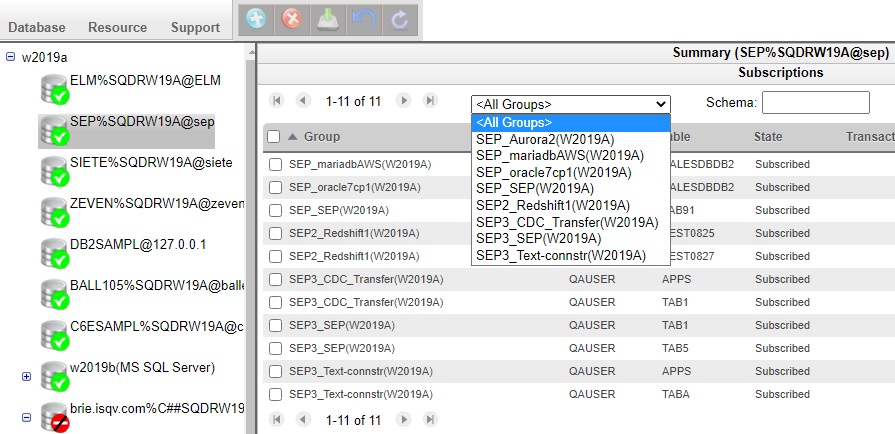StarQuest Technical Documents
SQDR Plus: Cleanup of Unused Groups
Last Update: 28 August 2020
Product: SQDR & SQDR Plus
Version: 4.50 and later
Article ID: SQV00PL051
Abstract
Over the course of time, you may find that there are I/R Groups (Subscribers) that exist in SQDR Plus (displayed in SQDR Control Center) that are no longer exist in SQDR (Data Replicator Manager) that are no longer needed. For example the group may have been deleted in Data Replicator Manager when the connection between tier 2 and 3 was not operational, or the tier 3 control database may have been re-initialized.
These orphaned groups do not cause any operational problems, but cleaning them up may avoid confusion in the future.
Contents:
- In SQDR Control Center, select an Agent and select the Subscriptions window.
- Examine the list of groups displayed when you select the Dropdown at the top of the window, where it typically says <All Groups>.

- If you see any duplicated names, there is a good chance that (at most) only one of them is still active.
- The name in parenthesis is the name of the tier 3 system; if you notice any tier 3 systems name that have been decomissioned, those groups are no longer needed.
- Next, select each of the groups and notice whether or not any subscriptions are listed. Any groups that have no subscriptions are candidates for deletion.
- To delete the group, select it from the dropdown, and select Delete Group from the Resource menu.

DISCLAIMER
The information in technical documents comes without any warranty or applicability for a specific purpose. The author(s) or distributor(s) will not accept responsibility for any damage incurred directly or indirectly through use of the information contained in these documents. The instructions may need to be modified to be appropriate for the hardware and software that has been installed and configured within a particular organization. The information in technical documents should be considered only as an example and may include information from various sources, including IBM, Microsoft, and other organizations.

